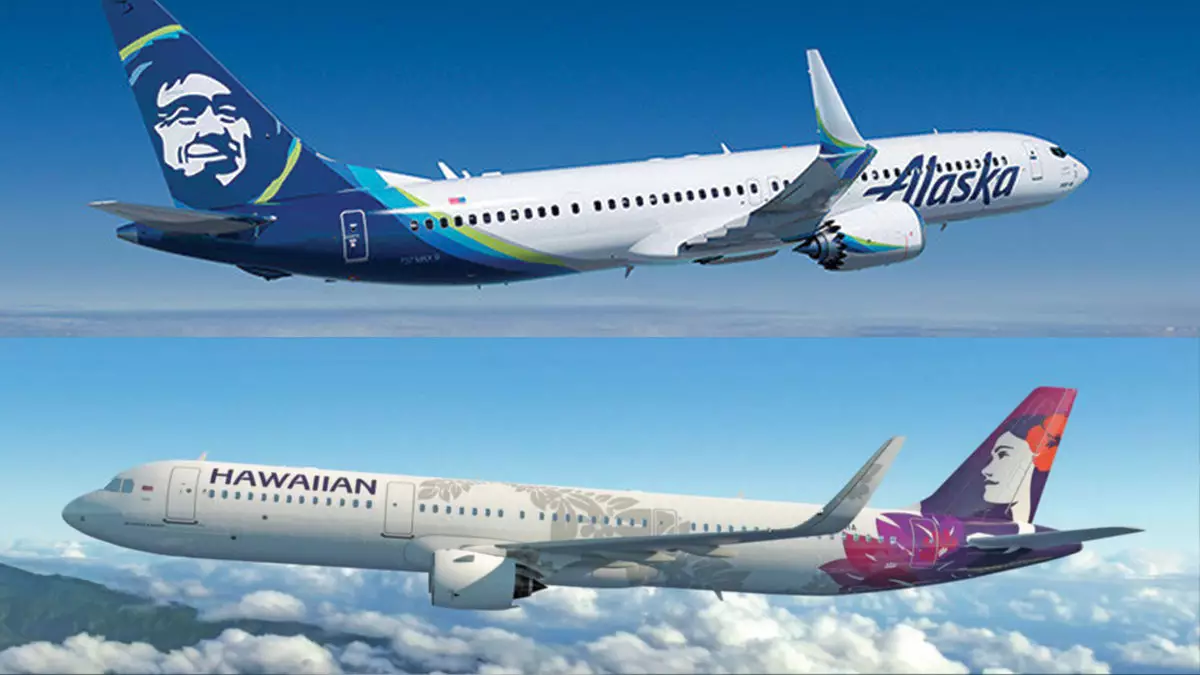The acquisition of Hawaiian Airlines by Alaska Airlines, valued at a remarkable $1.9 billion, marks a significant shift in the dynamics of the airline industry, particularly in the Pacific region. With the recent conditional approval granted by the U.S. Department of Transportation (DOT), Alaska Airlines is poised to complete this merger, which has generated considerable attention due to its potential ramifications for both airlines and their customers.
The path to the acquisition has seen both challenges and milestones. Last month, the Justice Department opted not to challenge the merger, allowing Alaska Airlines and Hawaiian Airlines to move forward. However, the DOT’s approval came with stipulations that will ultimately shape the operations of the newly combined entity. These stipulations are essential as they aim to safeguard consumer interests and maintain healthy competition in the airline market. Unlike the Justice Department, which focused solely on antitrust concerns, the DOT’s involvement underscores the importance of operational integrity and customer service.
The DOT’s conditions spotlight several crucial areas that the merged airline must address, particularly concerning service continuity, customer service enhancements, and the maintenance of competitive dynamics. The primary stipulation requires that the merged company sustain or even enhance service on routes where either airline operates independently or together with a minimal number of other carriers. This provision is vital in ensuring that customers experience no disruption in service while retaining access to reliable flights, especially on interisland routes in Hawaii.
Furthermore, the DOT mandates that Hawaiian Airlines adopt customer service policies aligned with those of Alaska Airlines, enhancing the overall traveler experience. One significant improvement is the requirement that families can secure adjacent seating for children traveling with adults without incurring extra charges, alongside guarantees for travel credits in the event of flight delays. Such enhancements demonstrate a commitment to improving customer satisfaction, particularly for families and frequent travelers.
Alaska Airlines has also made specific commitments aimed at supporting military personnel and their families, reflecting a broader trend in the industry to cater to those who serve. The inclusion of free checked bags and carry-on allowances for service members underscores the airline’s dedication to facilitating travel for military families. By waiving change fees for those affected by military orders, Alaska Airlines not only adheres to ethical considerations but also enhances its reputation as a military-friendly airline.
The merger’s implications don’t stop at operational adjustments; they extend into the realm of airline loyalty programs. Alaska has agreed to preserve the value of HawaiianMiles, a crucial aspect for frequent flyers who have accumulated rewards. The transition to a unified loyalty program appears to be handled delicately, ensuring that status benefits are retained for existing members, thus maintaining brand fidelity during the consolidation phase. This approach will likely ease concerns from loyal Hawaiian Airlines customers who may have feared losing their accrued benefits.
Leadership transitions also play a crucial role in integration efforts. As Ben Minicucci, Alaska’s current CEO, continues in his role post-merger, the airline aims to assure stakeholders of a stable management structure. Furthermore, the promotion of Joe Sprague, the regional president for Hawaii and Pacific, to CEO of Hawaiian Airlines demonstrates a commitment to a smooth transition while keeping regional expertise at the forefront. This strategic move may mitigate operational disruptions that often accompany mergers and acquisitions.
The merger between Alaska Airlines and Hawaiian Airlines presents a series of opportunities and challenges. With the DOT’s conditions in place, both airlines must navigate their integration process while prioritizing customer satisfaction and competitive fairness. As they work to unify operations, the commitment to maintaining service levels, enhancing customer experience, and supporting military families signals a progressive approach in a rapidly evolving industry. As such, the future outlook for Alaska Airlines and Hawaiian Airlines appears promising, provided they fulfill their commitments and foster a seamless transition for their passengers.


Leave a Reply